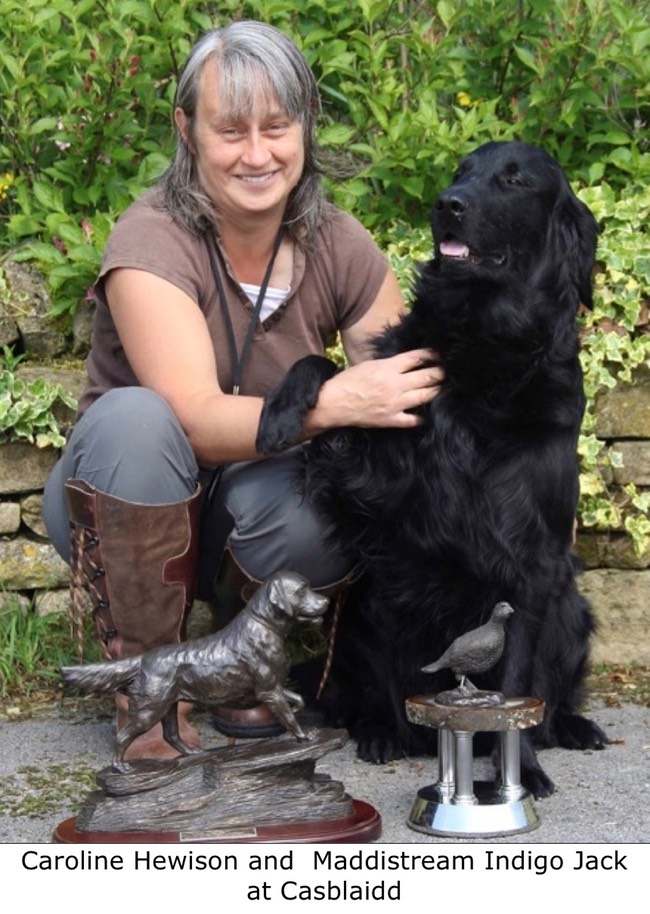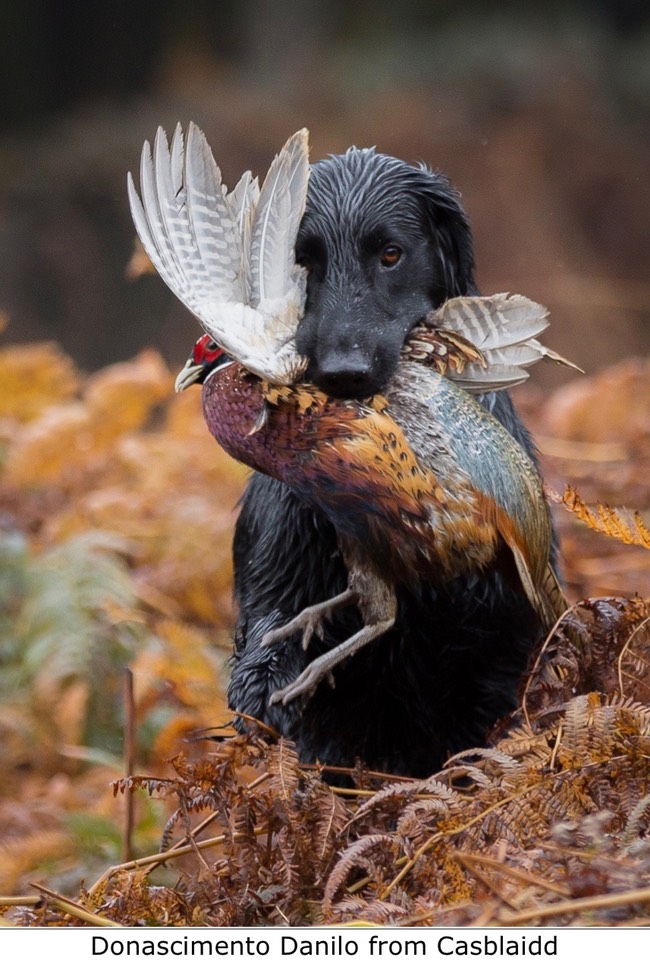1. What is your relationship with the breed? When did you get your first Flatcoat?

I had my first flatcoat in 1996 - I took him on at a year old as he had gone back to the breeder. I sadly lost him two years later with kidney failure, but it was the start of my love for the breed. I bought a puppy a few months later, a dual purpose dog, who did some showing and also did well at working tests. The breeders were members of NEFRA so that's how I ended up at my first working test having done some practicing in the garden! We scored 7 out of 80, but I was hooked and started doing some more formal training with him! Many more flatcoats have followed, and our dogs have had many working test awards, in breed and any variety competition, and also some field trial awards with 'Maddistream Indigo Jack at Casblaidd' who is in the pedigree of four of our current dogs. We have also had some success in the show ring with good placings, and Reserve Challenge Certificates with my lovely liver girl 'Harvest Moon of Casblaidd'. We have recently bred our first litter, with the aim of owning biddable working dogs, that look good while doing it!
My husband Chris has had flatcoats even longer - he had his first dog in 1986, and achieved many great things with him, including KCJO Junior of the year, so if it hadn't been for Chris, I would probably have never got involved in flatcoats!
2. What do you like the most in a working Flatcoated Retriever?
I love watching flatcoats work, I love their style, and the way they use the wind to find the birds, they do have excellent gamefinding ability, and they are usually good at marking the birds.
3. What abilities do you look for when you are breeding a working Flatcoated Retriever
We have recently bred our first litter - I wanted to breed a dual purpose litter of healthy pups with a good temperament, and with the biddability, willingness to please, quietness, soft mouthed, and drive that are on both sides of the pedigree. Health testing is a must, so good hip scores and up to date eye testing as a minimum. Hopefully with good conformation so they are fit to work for a long time. A proven track record of ability in the ancestors is important.
4. What could be done to promote the Flatcoat as a field trial/working test dog?

I think we do struggle a bit in the UK to encourage more people to work their dogs - we need to encourage people new to the breed to have a go and realise how much the dogs enjoy it, but we also need to promote the upper end of the spectrum, and give appropriate training sessions to those who are competitive with capable dogs, so that they can compete with the Any Variety Retrievers.
5. How does a working Flatcoat excel as a picking up dog?
They have excellent game finding ability, and will often find birds that other dogs have missed. They seem to have a knack of knowing which birds have been pricked while picking up. Excellent at marking, excellent noses.
6. What’s important to emphasize when training a Flatcoated Retriever?
Patience and time...they can become bored in large groups of dogs at training classes, so I try and do some one to one sessions with a reward based trainer, and some group sessions when they are older.